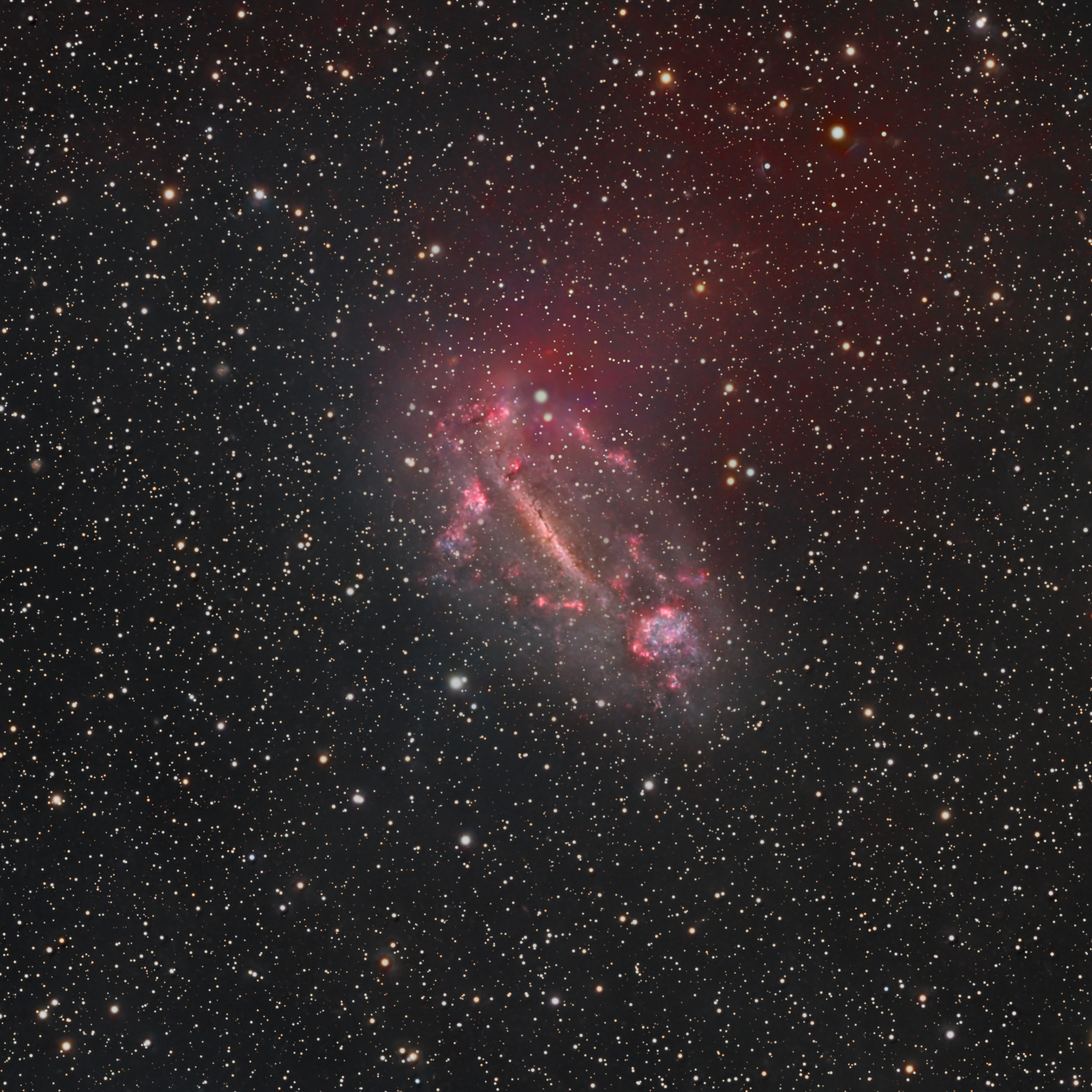
ESO 179-13 “Kathryn’s Wheel” — a cosmic sparkler in the southern sky
Located in the constellation Pavo, ESO 179-13—nicknamed Kathryn’s Wheel is the nearest known collisional ring galaxy, sitting just 33 million light-years from Earth. The galaxy was originally cataloged in 1982 by ESO based on a survey image at La Silla, Chile. At the time the nature of the galaxy was not understood. A 2017 research paper by A. F. López-Sánchez et al. identified ESO 179-13 as the closest known collisional ring galaxy, based on deep imaging and spectroscopic analysis.
The nickname “Kathryn’s Wheel” for ESO 179-13 is a creative play on words that connects its physical appearancewith a familiar cultural object, and was popularized by astronomers and scientists after its discovery. A Catherine wheel is a traditional spinning pyrotechnic firework that rotates rapidly while shooting out sparks in a circular pattern. The resemblance between the firework and this galaxy’s ring structure makes the comparison visually compelling.
Formed by a head-on collision between two galaxies, this rare structure captures a moment of cosmic violence frozen in time.
The smaller intruder galaxy punched through the heart of a larger disc galaxy, triggering a powerful shock wave that rippled outward and compressed gas into a brilliant, expanding ring of star formation. The resulting structure spans about 4 arcminutes across, corresponding to a true diameter of roughly 20,000 light-years (6 kiloparsecs).
In this LRGB + Hydrogen-alpha view, the ring blazes with pink emission from hydrogen-rich star-forming regions. At the center lies a dusty bar-like remnant of the original galaxy’s core, while the intruder is thought to be the bright, clumpy region at the lower edge of the ring. Above the system, faint arcs of red nebulosity hint at outflows of ionized gas likely stirred up during the collision.
While far smaller than dramatic systems like the Cartwheel Galaxy, Kathryn’s Wheel provides a much closer look at the same fundamental process: a galactic bullseye formed in a high-speed cosmic encounter, radiating the energy of both destruction and renewal.
Imaged in LRGB and H alpha on my Planewave CDK 1000 at Observatorio El Sauce, Chile.
Image acquisition and processing: Mike Selby